RadWagon Front Derailleur Adjustment Guide
The 2017 and 2018 RadWagon cargo bikes feature a front derailleur. If the chain is making excessive noise, shifting poorly, or falling off the chain rings (at the center of the pedal cranks), the front derailleur likely needs to be adjusted.
There are three adjustments to get the derailleur in working order: adjusting the high limit screw, the low limit screw, and the cable tension. The derailleur and shifter that come on the RadWagon, and all ebikes by Rad Power Bikes, are the same components that come on standard, non-electric pedal bikes, so the parts and procedure to tune them should be very familiar to any reputable bike mechanic.
If you are not confident in your ability to successfully and safely perform all steps, we recommend having the work performed by a local, certified, and reputable bike mechanic.
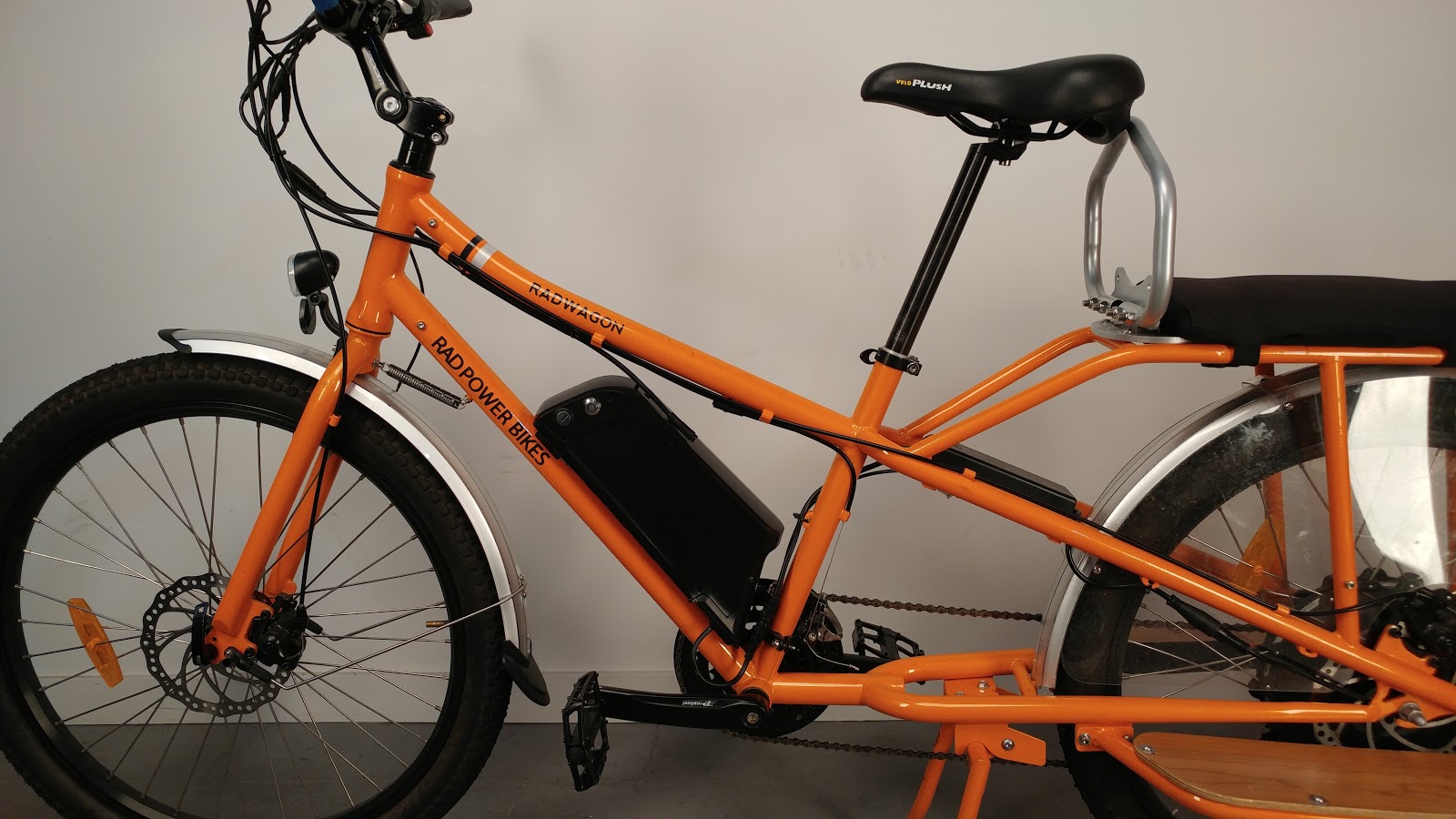
There are two screws, one to define the high limit of the derailleur arm and one to define the low limit of the arm. Setting these limits properly will prevent the chain from falling off of the chain rings in the front (by going outside of 1st or 3rd gear). Once those high/low limits have been set using the limit screws, the cable tension needs to be adjusted so that the bike will shift smoothly.

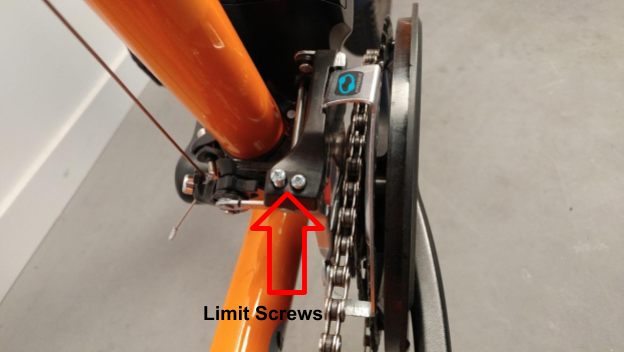
1. Power off the bike. Ensure the bike is in the off position and use the key to remove the battery. Once removed, press and hold the “MODE” button on the LCD Display Remote until the display remains off for about two seconds (it may flash on briefly). This ensures the power is fully discharged from the bike and it is safe to work on.
2. Shift the bike into 1st gear. Prop the bike on the kickstand so the rear wheel is off the ground and use one hand to revolve the pedals while shifting the bike into 1st gear, "1" on the shifter on the handlebar. This should set the chain onto the smallest chain ring in the front.
3. Locate the limit screws on the top of the derailleur body.
4. Adjust the lower limit screw. Keeping your fingers clear of the chain, chain ring, and other moving parts/pinch-points, push the derailleur arm towards the frame of the bike, looking inline at the gears from the back of the bike. Use a Phillips head to adjust the lower limit screw (the right screw, marked with a small "L" imprinted in the plastic). Loosening this screw, or turning it counter clockwise, will allow the arm to travel closer to the frame. Tightening the lower-limit screw by turning clockwise, will make the derailleur arm stop farther away from the frame. Adjust the lower limit screw so the derailleur arm is centered on the smallest gear as shown below.
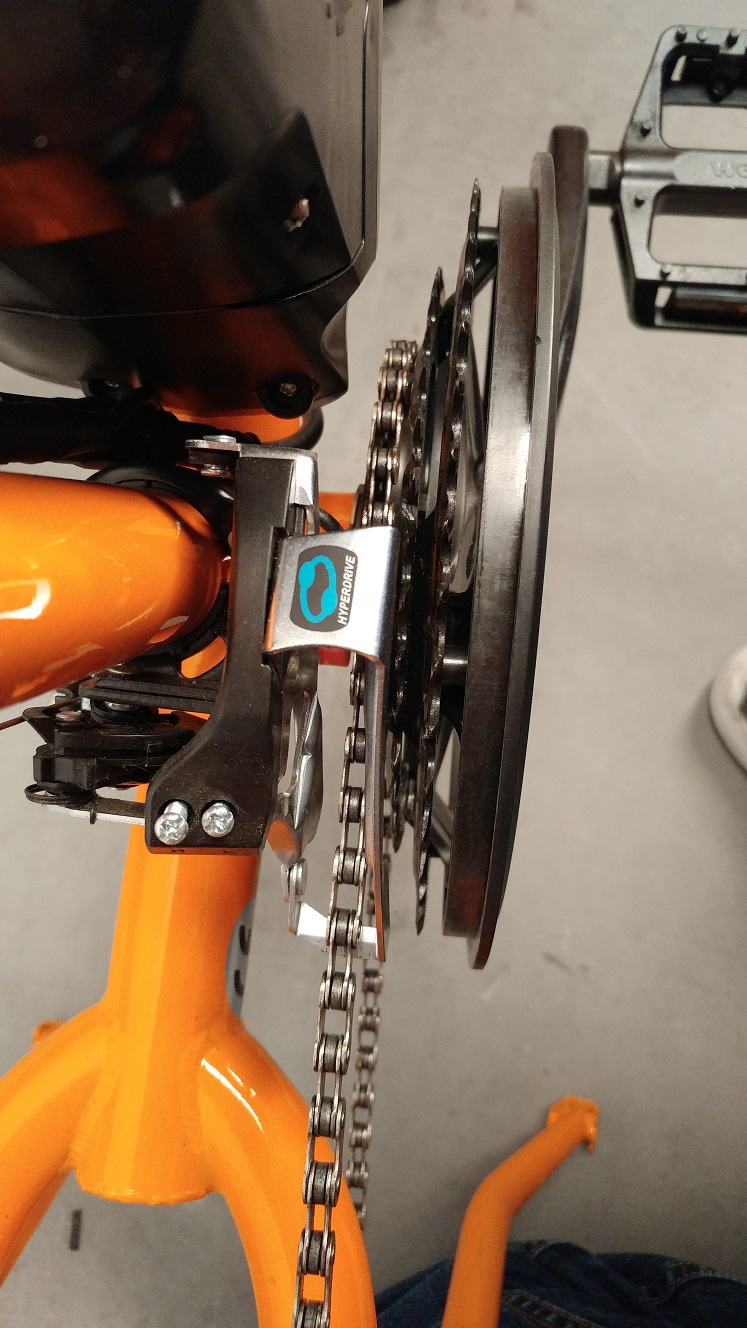
5. Shift the bike so that the chain is on the largest front chain ring, and the shifter on the handlebars is indicating 3rd gear. Prop the bike on the kickstand so the rear wheel is off the ground and use one hand to revolve the pedals while shifting the bike into 3rd gear, "3" on the shifter on the handlebar. This should set the chain onto the largest chain ring in the front.
6. Adjust the higher limit screw. Use a Phillips head to adjust the higher limit screw (the left screw, marked with a small "H" imprinted in the plastic). Loosen or tighten the higher limit screw so the derailleur arm is centered on the largest gear as shown below.
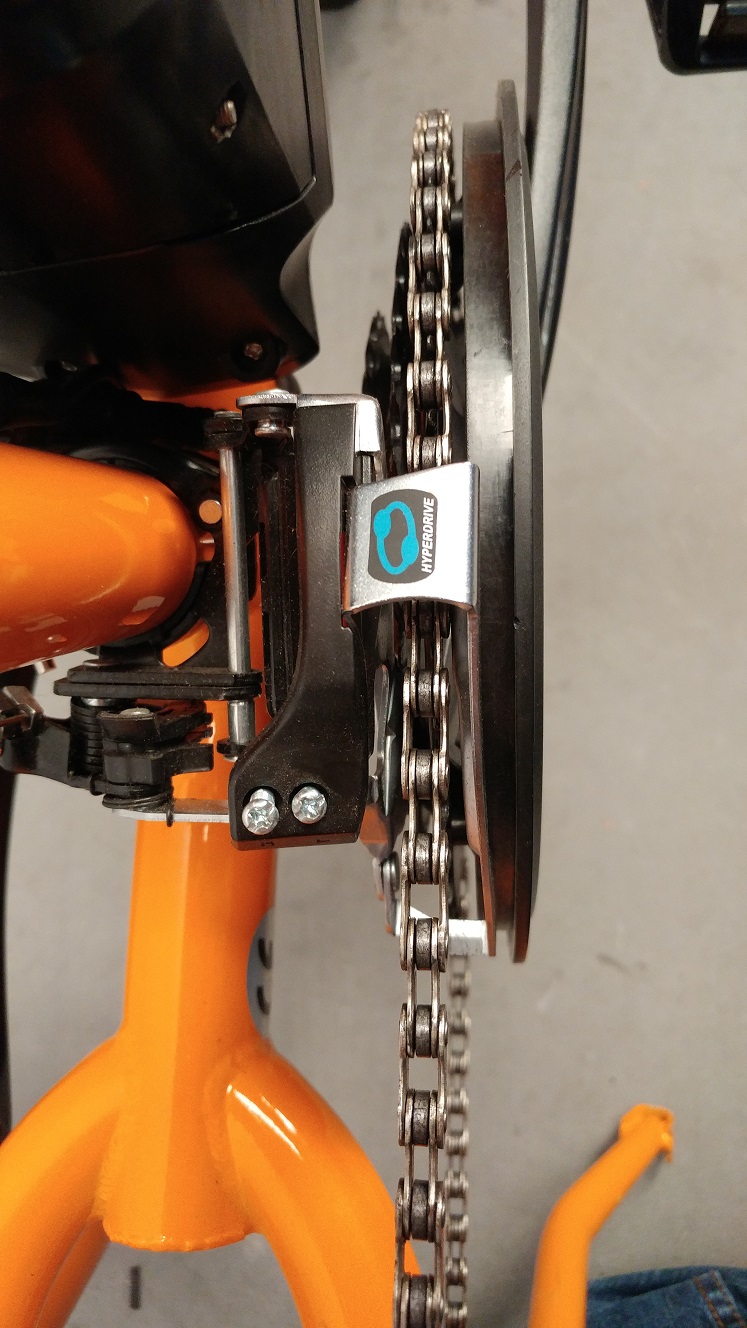
7. Test the derailleur limits and shifting. Lean the bike forward on the kickstand so that the rear wheel is off the ground. Spin the pedals, and shift through gears 1-3, one gear at a time.
8. Adjust cable tension. If the bike has trouble climbing into the next highest gear, stand at the front of the bike and twist the barrel adjuster (circled, below) half of a turn clockwise. If it is having trouble downshifting, from 3 through to 1, turn the barrel adjuster counterclockwise by half a turn at a time. After each half turn, shift through the gears again to test if the bike shifts smoothly.
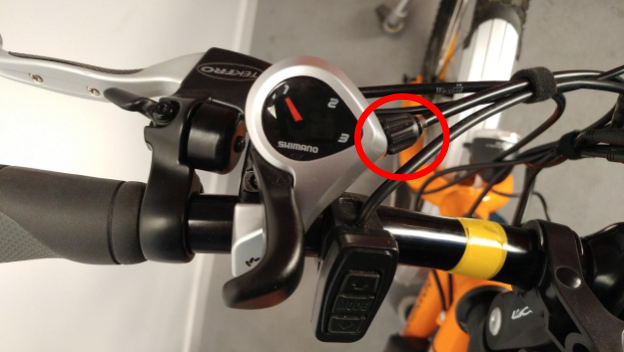
NOTICE: If you do not have the experience, skill, and tools to complete assembly and fit, Rad Power Bikes highly recommends having a certified, reputable bike mechanic complete these procedures as well as any future adjustments or tuning.
Click HERE to learn more about the gear shifting system our ebikes use.
